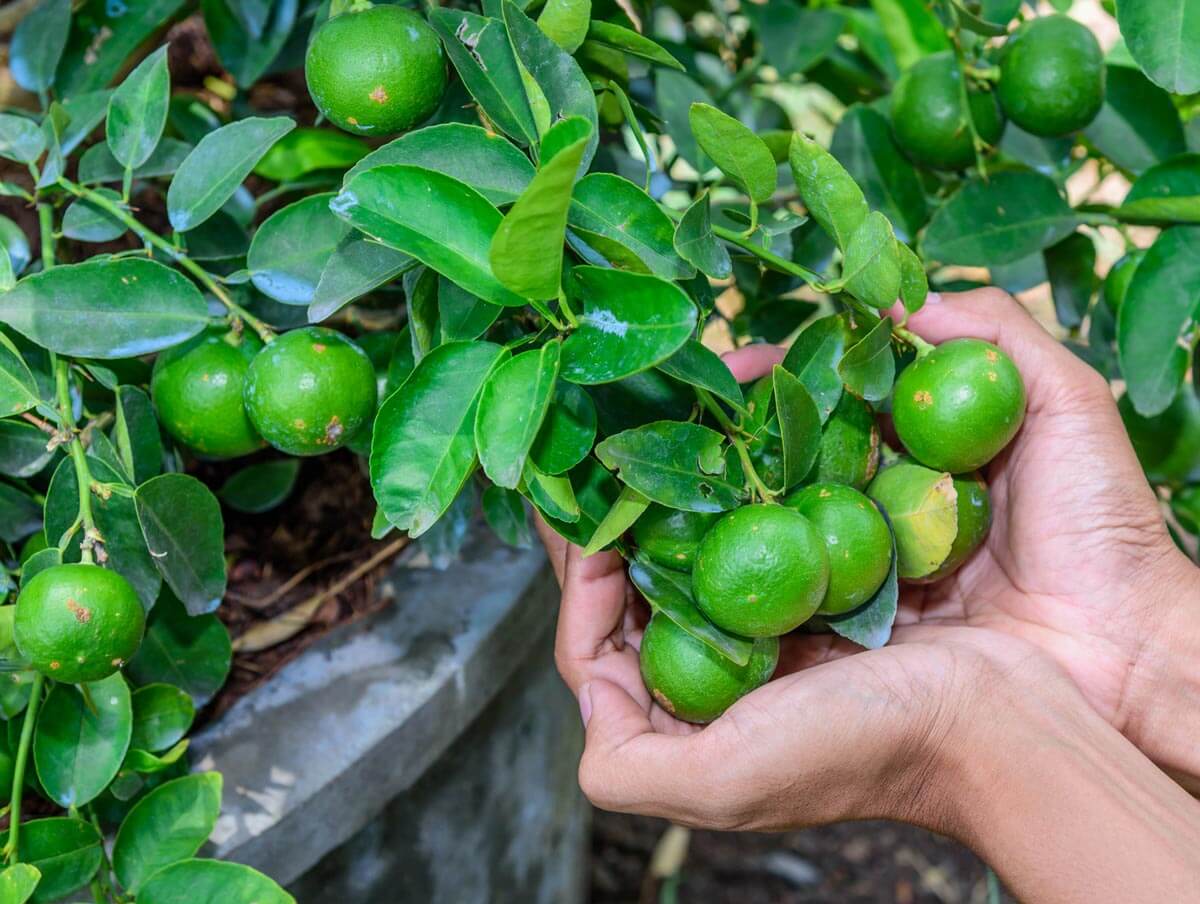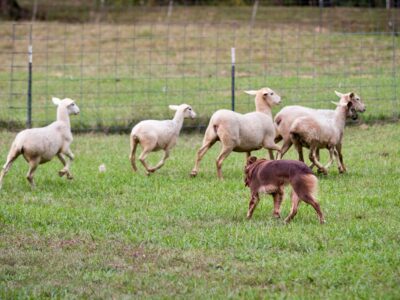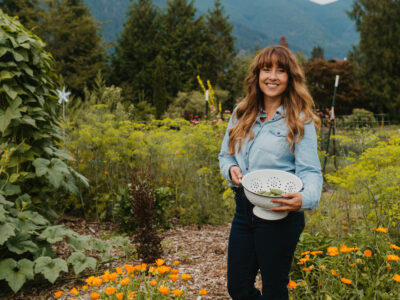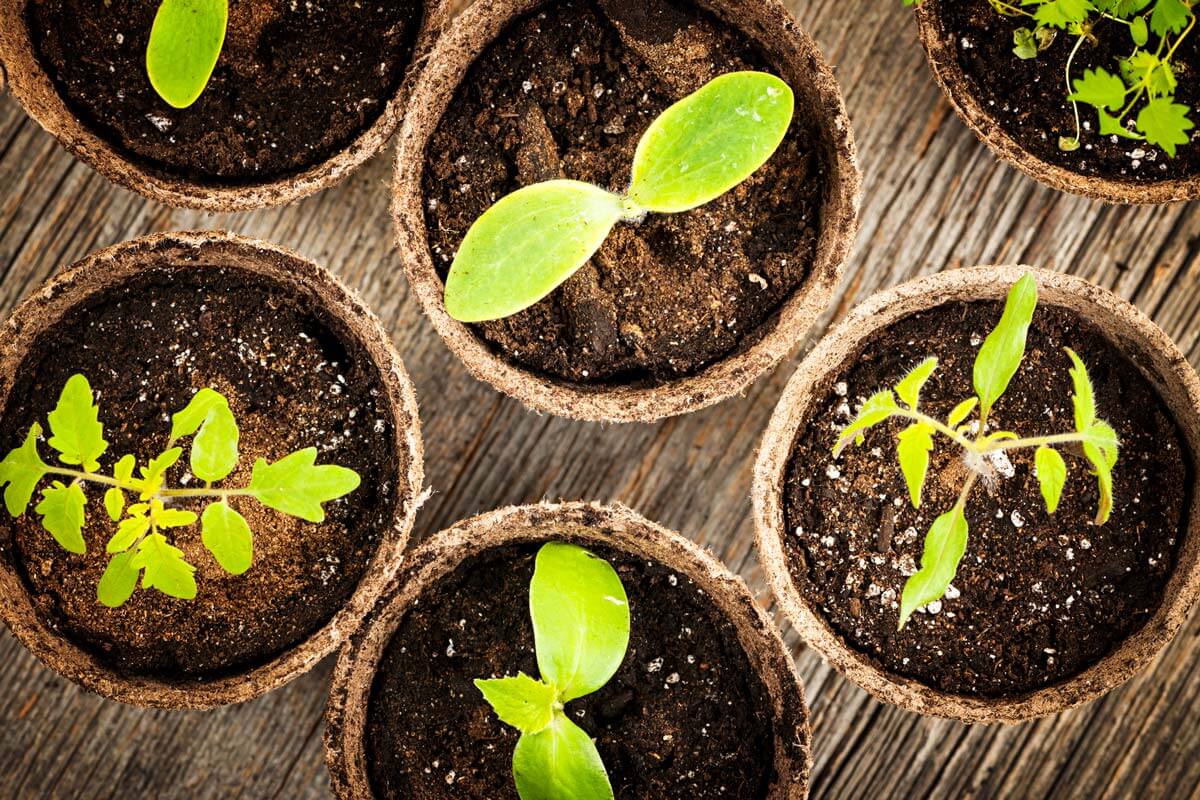Growing fruit trees in pots is a fantastic solution if you want to produce fruit for your family, but you may not be in your forever home, or don’t have the acreage for a full orchard. Learn the tips for success including which fruit trees grow best in pots, which containers are best, plus tips to make sure your trees grow and produce fruit for years to come.
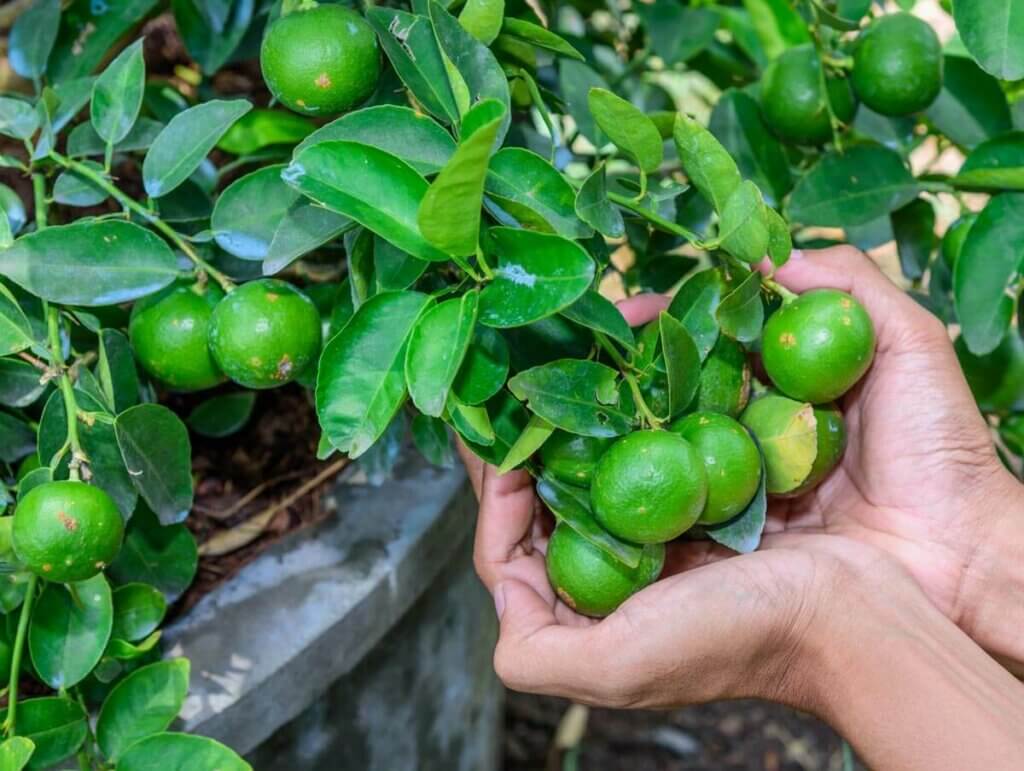
In today’s episode, we’re talking about growing your own mini fruit garden, specifically growing fruit trees in containers, which types of trees grow best in containers, which containers are best to use, and tips to make sure you have success and longevity of these trees when growing them in containers.
I have a lot of experience on how to grow fruit trees, when to plant fruit trees in an orchard, how to care for fruit trees in the fall and winter, how to treat fruit trees organically, utilizing fruit tree guilds, and even how many berry bushes and fruit trees you need to plant per person, but I don’t have experience growing fruit trees in containers, especially types that don’t grow natively in my area.
But I also know many people who would like to grow nut trees and fruit trees, but maybe they’re not in their forever home, maybe they’re renting, or perhaps they don’t have the exact climate to grow the right variety of trees.
I’m so excited to have Christy from Gardenerd on the Pioneering Today Podcast (episode #313) because she’s going to talk about how you can grow fruit trees in pots to be able to take advantage of micro-climates, what you need to know if you have really cold winters or extreme temperatures, picking the right size container, and she has some fabulous tips to help keep the fruit for ourselves and not let the critters get it first!
This podcast is sponsored by ButcherBox! While many of us are able to grow our own fruits and vegetables, many people aren’t at the point where they can raise their own meat. This is where ButcherBox comes in because they offer the kind of meat I would like to buy if I couldn’t raise it myself!
They also offer seafood that’s been wild-caught and sustainably sourced… hello lobster! ButcherBox is now offering new members free lobster-tails and ribeye steaks in your first box (this is a limited-time deal, but they’re always coming up with new offerings, so head on over to ButcherBox and sign up today!).
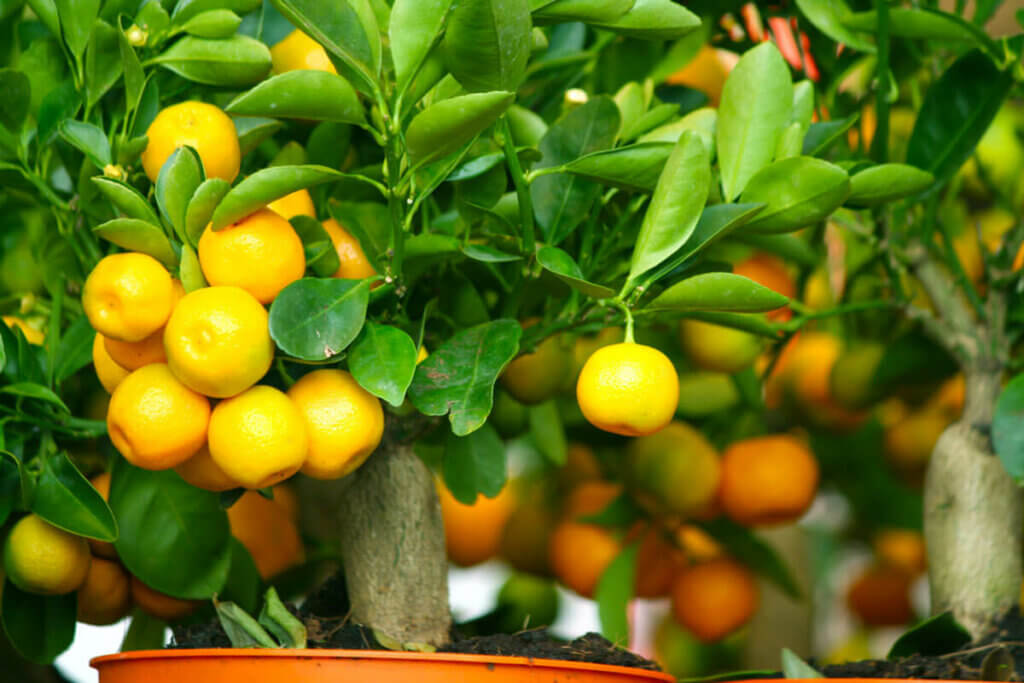
Table of Contents[Hide][Show]
Benefits of Growing Fruit Trees in Containers
- You can move them to take advantage of sunny spots and micro-climates.
- You can move them if you’re not in your forever home, or possibly renting.
- You can grow varieties that wouldn’t normally grow in your climate.
Selecting the Right Fruit Tree to Grow in Pots
The important thing to research is rootstock. For those not familiar with this, the rootstock is the base of a grafted tree and it’s determined by the species that grafting onto it. It also determines the size of the tree at maturity.
Sizes of Trees
There are four sizes of trees that you can choose from standard, semi-dwarf, dwarf, and miniature.
- Standard-sized trees are going to grow to an average 15-30 feet tall.
- Semi-dwarf will grow to about 50-75% of the standard size.
- Dwarf will be about 30-50% of the standard.
- Miniature will be even smaller than that.
When buying a tree, Christy recommends choosing the smallest size possible. If you’re growing fruit for yourself or your family, it’s ideal to keep the tree pruned to the size that you can easily reach and manage all the fruit.
If you can’t reach the fruit at the top of the tree without significant effort, it’s likely that fruit will get eaten by the birds, the squirrels, or other critters before you can get to it.
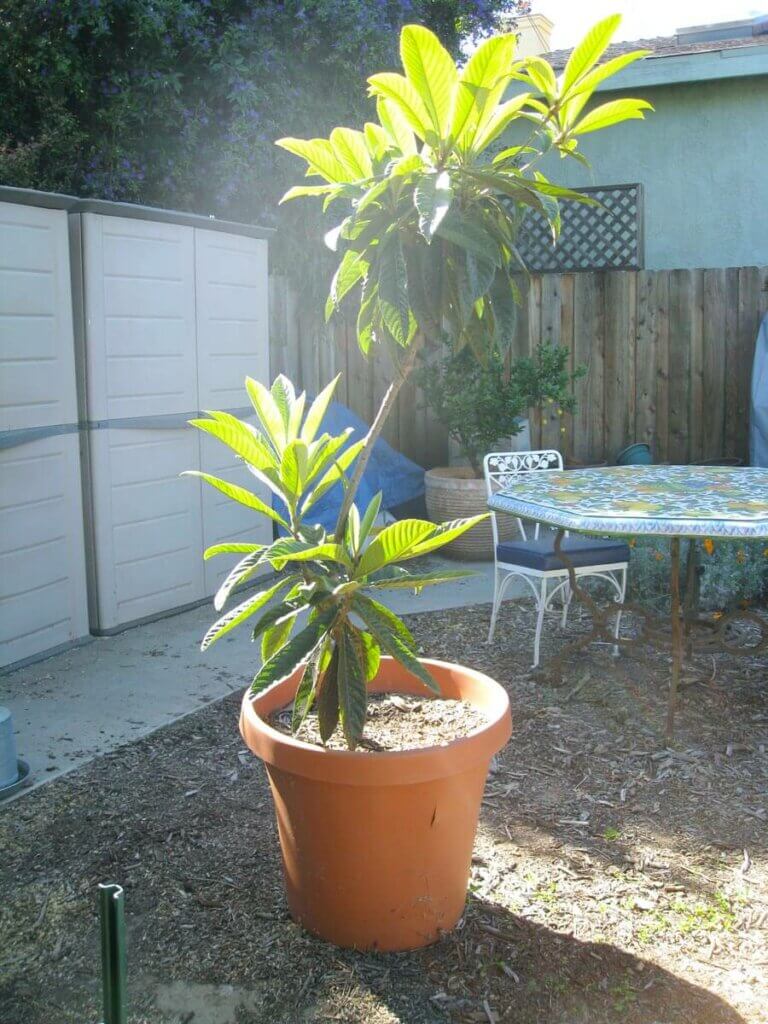
Best Size Tree to Buy
Miniature varieties of trees are harder to find, it’s likely that semi-dwarf or dwarf are the sizes you’ll find at your local nurseries and the size Christy recommends buying.
What to Know About Rootstock
Rootstock is the part of the tree that’s underground and has a well-developed root system. It’s often the rootstock that another tree (or the bud from another tree) is grafted to.
Rootstock is often selected for either its disease resistance or soil-born issue resistance such as root-rot, anthracnose, or other pathogens that are living in the soil.
If you’re planning on using soil from your yard, it’s important to know what pathogens or diseases live in your soil to make sure you’re buying a fruit tree that has the right resistances.
Can I Plant Standard-Size Fruit Trees in Pots?
I was curious if you could get a standard-sized fruit tree and just keep it pruned back to keep it a smaller size so that it would be just fine in a pot.
Christy’s recommendation is that you can actually manipulate a tree to keep to a smaller size as long as you start it from a young age. Don’t try and take a fully mature tree and prune it down to a smaller size as you could do significant damage to the tree.
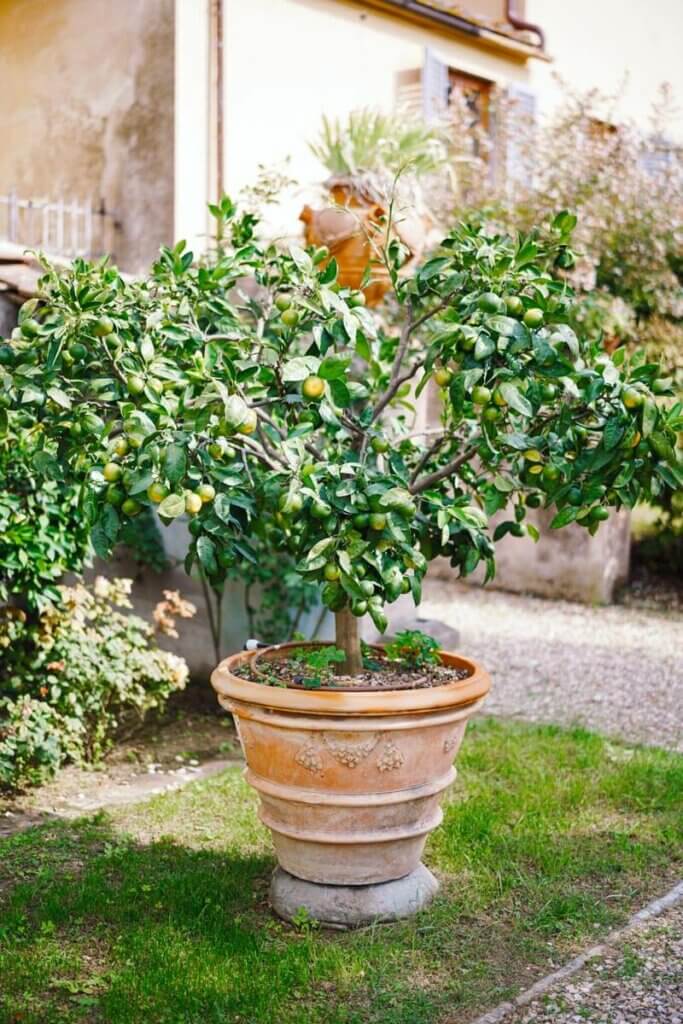
Best Pot Size for Fruit Trees
Something to consider about fruit trees is that their roots like to grow out as far as the dripline, but in a pot, they’re unable to do this, so what happens is the roots circle around each other (or air prune depending on the container) and can sometimes get rootbound.
Christy recommends starting with a container that’s at least 20-inches in diameter and at least 24 inches in height.
Best Type of Pot for Fruit Trees
Ultimately it’s an aesthetic and budgetary choice for the type of pot you want for your fruit tree. But Christy definitely recommends getting it out of the black nursery pots they come in as soon as possible because black attracts heat and this can negatively affect the roots if left in too long.
Here are the pros and cons of the different materials for pots…
Plastic Pots
Plastics are less expensive but do become brittle over time from sun exposure. Replacing a mature fruit tree, even if it is dwarf or semi-dwarf is no easy task. The benefits of plastic pots are that they’re lighter and easier to move, they’re less porous so the plant dries out more slowly, and they’re cheap.
Ceramic Pots
Ceramic un-glazed pots are more porous so they’ll dry out more quickly. They’re much more aesthetically pleasing and they age well over time.
Ceramic glazed pots will retain moisture well, they’re also aesthetically pleasing and age well over time.
Stone Pots
Stone pots are more expensive, however, if you’re in a place where you have heavy wind, the pots will hold the trees in place. But it’s important for your stone pots that you’re not planning to move the trees around much as they’re much more difficult to move.

Put Pots on a Saucer or Patio
Because fruit trees like to naturally spread their roots out, it’s important to place your pots either elevated off the ground, on a patio or other solid surface, or in trays so the roots don’t grow through the holes and into the ground.
To see what happens when this happens, and how to save it, check out Christy’s YouTube video where she saved a pot-bound tree.
Bottom line, you will either have to sacrifice your pot or the tree in order to save it, so learn from Christy’s mistake and place it on a saucer, or elevated from the ground where the roots will be air pruned.
How to Care for Trees in Pots
Over time, there will be some care and maintenance the tree will need in order to keep it growing and producing well.
Every few years, removing the tree from the pot, adding in new soil, and giving the roots a trim will help keep the tree happy and healthy.
Christy says, if proper care is given, the tree can remain happy and healthy for its lifetime. But you can also transplant the trees into the ground if you’d like.
Tips for Balconies & Small Patios
For those who live in a home or apartment with small balconies or patios, there are some tips Christy has for growing trees in a small space. The two methods she discusses in-depth in her book, Grow Your Own Mini Fruit Garden, are espalier and multi-fruit trees.
Espalier
Espalier is growing a fruit tree (or ornamental shrub) whose branches are trained to grow flat against a wall or other two-dimensional spaces. If you only have a small strip of dirt or a pot on the side of a patio against a wall, you can plant a fruit tree and the roots will grow around the wall (or in the pot), then the wall itself will act as a trellis.
This is a great way to utilize a small space but still grow your own food.
Multi-Fruit Trees
Multi-fruit trees are another great option if you want to grow multiple varieties of fruit but only have space for one tree.
A multi-fruit tree is where many different varieties of the same species are grafted onto one trunk. You can grow a multi-stone fruit tree that will have two branches each of plum, nectarine, peach, and apricot, and this tree can occupy the space of one tree with the benefit of four or five different fruits.
The trick with these multi-fruit trees is that one variety will tend to want to take over and it’s usually the one facing south. This is where pruning will come into play to help keep the aggressive branch held back until the others catch up. It’s much easier to prune back the assertive branch than to get the others to catch up.
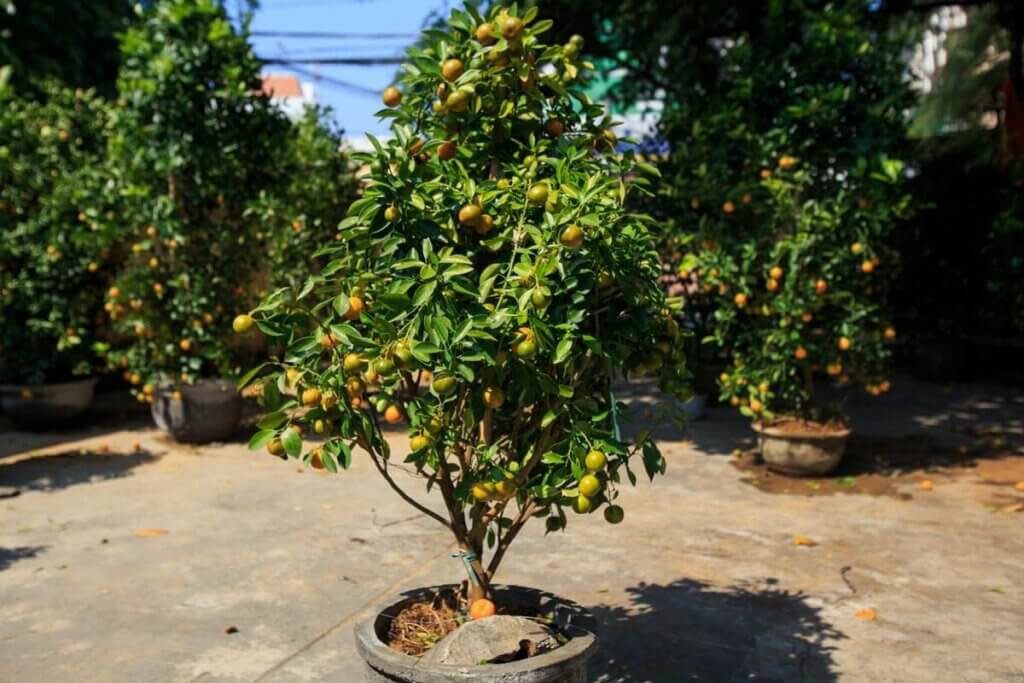
Fruit Trees in Winter
What do you do with fruit trees if you live in an area where the weather gets very cold in winter? Christy says she recommends talking to a local nursery to see what they do with their fruit trees during the winter.
Sometimes people will bring their fruit trees indoors in the winter, or maybe into a garage or other protected area. Other times people will wrap their trees with straw or blankets, but you’ll want to be sure whatever method you use is ideal for the tree and your area.
Tips to Keep Critters Away
It’s just a fact that when growing food we’re going to have to take measures to keep critters away. I’m talking deer, birds, squirrels, bugs, and other unwanted pests.
There are many methods to keeping pests at bay, but the first line of defense is to know which pests are getting to your fruit, then you can choose the right method of protection.
In my area our biggest concern are deer. There are a lot of misnomers around about what keeps deer away from trees: human hair, nets, flashing ribbons, CDs, etc. What I’ve found is that these things work for a week or two, then the deer tend not to care about them.
Fencing/Netting
If deer, squirrels, or birds are getting to your fruit trees you can wrap deer netting around the exterior of your fruit tree to keep them from stripping the branches.
Some birds and tricky squirrels will be able to find their way through this netting, but for deer, this is the best line of defense.
Some people like to drape the netting over the top of the trees to keep birds out. If you’re concerned about the netting damaging young trees, put some stakes into the pot with tennis balls on top, then drape the netting over the stakes to keep it from touching the tree.
Tangle Foot/Tree Guards
There are other methods such as a tree guard that can help protect the base of the tree from deer chewing on the bark. Then to keep the squirrels from climbing up the tree guard you can add some tangle foot.
Sprays
There are various sprays out there that are known to keep pests away, but they tend to have varying reviews and, if you live in an area with rain, you may need to reapply often.
Traps
In Christy’s area, she has very assertive rats that don’t mind any of the sprays, so they use traps to capture the rats and keep them from getting to their fruit.
Want to Learn More?
You can learn more and follow Christy over at Gardenerd.com where you can take a look at her blog, shop, podcast, and more. Give her a follow on Facebook and Instagram, and check out her helpful YouTube videos on her channel here.
[fusebox_transcript]
More Posts on Growing Fruit
- How to Grow Fruit Trees
- When to Plant Fruit Trees in an Orchard
- How to Care for Fruit Trees in the Fall and Winter
- How to Treat Fruit Trees Organically for Pest Control
- How to Get Rid of Mummy Berry Disease on Blueberry Bushes
- Utilizing Fruit Tree Guilds
- How Many Berry Bushes and Fruit Trees You Need to Plant Per Person
- How to Prune an Apple Tree in Winter
- 5 Tips to Starting an Orchard and Growing Fruit
